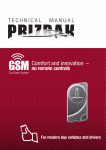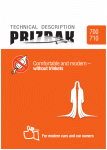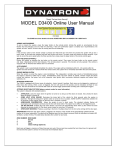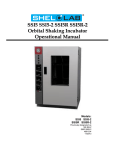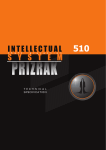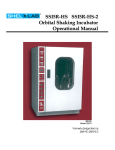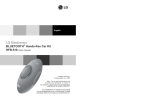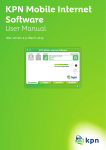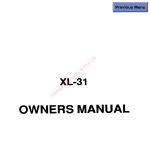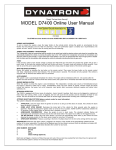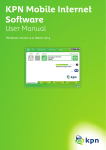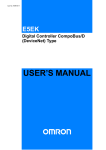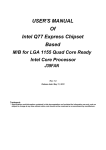Download Installation Manual Hidden Auto Security
Transcript
Installation Manual
700
710
Hidden Auto Security
Table of contents
Alarm description................................................................................ 2
Introduction....................................................................................... 2
Terms................................................................................................ 2
Alarm functions.................................................................................. 2
Alarm operation algorithms................................................................. 2
Table 1. Trigger indication................................................................... 3
PINTODrive®...................................................................................... 3
AntiHiJack.......................................................................................... 3
PIN-code............................................................................................ 4
PUK-code........................................................................................... 4
Maintenance mode............................................................................. 4
Additional functions............................................................................ 4
Connection........................................................................................... 5
Table 2. Alarm connectors description................................................. 5
16-pin connector description............................................................... 5
CAN bus parameters indication............................................................ 6
Connection scheme............................................................................. 7
Alarm programming............................................................................. 8
Programming – Stage one................................................................... 8
Programming – Stage two................................................................... 8
Table 4. Programming menu............................................................... 8
Hardware features configuration ........................................................ 8
Menu 1. Hardware features configuration............................................ 8
Menu 1.2. Programmable Inputs/Outputs configuration........................ 9
Table 5. Programmable inputs options................................................. 9
Table 6. Programmable outputs options............................................. 10
Configuration of built-in sensors........................................................ 11
Table 7. Configuration of built-in sensors............................................ 11
Configuring user functions................................................................ 12
Menu 2. Configuring user functions................................................... 12
Change PIN-code.............................................................................. 12
Change programming button............................................................ 12
Programming example...................................................................... 13
Reset to the factory default settings.................................................. 13
Arranging the Alarm units in the vehicle..............................................14
Delivery package............................................................................... 15
Specifications and operating conditions......................................... 15
Alarm description
Introduction
This document is compatible with slave-security systems TEC700/710 (hereinafter referred as the Alarm)
The Alarm is designed for protecting the vehicle from being stolen
from its parking location and from being hijacked. The Alarm also
notifies if the vehicle is being tampered with.
Owner is authenticated by enterning PIN code from vehicles
buttons, for example steering wheel.
The alarm contains a built-in tilt sensor and has a connector for
optional sensors
To see the list of vehicles compatible with the Alarm along with
information on its functionality please use Integrator (www.tecintegrator.com).
Terms
Programming button — one of the factory (default) buttons, with
which the Alarm can be programmed (buttons specific to the vehicle can
be found in the Integrator). Programmable button can be changed only
within short time after installation of the Alarm. Also built in button can be
used as programming button.
Security — is a state of the Alarm, which is turned on after locking
the doors in any way provided by the manufacturer of the vehicle
(keyless entry system, remote control, rearming the alarm etc) and
turning factory security system. Secure state can be left by unlocking
the doors with the original remote control or vehicles keyless access
system or by entering the PIN code.
Guard mode — active state of the PIN TO Drive® and AntiHiJack:
if one of these functions has entered guard mode, to leave it it is
required, to enter PIN-code, otherwise engine will be locked.
Comfort — feature allowing not only to lock doors from the factory
remote, but also to raise windows (sunroof also can be closed).
Alarm functions
•
•
Sound and visual notification if the alarm was triggered
Built-in shock and tilt/movement sensors
•
•
Theft protection when the vehicle is parked - PINTODrive®
Antihijack protection - AntiHiJack.
Alarm operation algorithms
Arming/Disarming
To arm the alarm press the button of the remote, or close the doors
with keyless system or lock the door with the key. Alarm will warn you
that it is armed with audible signal and LED flashes. After some time
interval between flashes will decrease.
To disarm the alarm press button of the remote, or open vehicle
with keyless system. Alarm will warn you with 2 audible signals. LED
will go off.
Emergency disarming
If remote is unavailable (for example it has low battery charge), to
disarm the alarm do the following:
1. Open drivers door with key. Alarm will be triggered .
2. Turn the ignition on and enter PIN code, wait for confirmation.
3. Alarm will be disarmed.
Warning about open door
If you left an open door, hood or trunk and armed the Alarm, the
system will warn you with 3 audible signals. LED will inform you about
open compartment:
• 2 flashes — hood is open
• 3 flashes — trunk is open
• 4 flashes — door is open(doors).
Alarm won’t warn you when the vehicle is entered through
opened door. You can, without rearming, close door, hood,
or trunk, and the system will take it under its control.
2
Alarm trigger
The alarm has 2 built-in sensors: shock sensor and tilt /movement
sensor. Because of these sensors the alarm is able to differentiate
different influences on the vehicle.
Optional sensor can be connected if required. The alarm can be
connected to multiplex sensors and standard sensors.
In secure state alarm can react to external action by warning or by
triggering. Warning will be made if small force was applied to the shock
sensor. In this case alarm will make short audio signals.
Alarm will be triggered, if any door, hood, or trunk is open, if tilt/
movement sensor is triggered, and if excessive force was applied to
the shock sensor. Siren will be on for 30 seconds and hazard lights will
blink.
You can adjust sensors sensitivity.
Public order feature
After three triggers in armed mode from one sensor in one
hour alarm will stop responding to this sensor for one hour. Alarm
will continue working with this sensor if there were no triggers for
one hour. This function will cancel alerts but warnings will stay
Trigger check
Alarm remembers causes of alerts for security period. Memory will
be cleared after ignition switched on.
If alarm was triggered, after disarming the alarm four audible
signals will be made and indcation of cause will start.
TEC-61157-1 Installation Manual-700/710 USB
Table 1. Trigger indication
LED flashes
Note
x1
x2
x3
x4
x5
x6
x7
Public order feature
Hood was opened
Trunk was opened
Door(s) was opened
Shock sensor (triggered)
Shock sensor (warning)
Tilt/movement sensor was triggered
x8
Optional sensor (triggered)
x9
Optional sensor (warning)
Arming the alarm in sensors off mode
If you would like to turn audible alert off.
1. Arm the alarm.
2. In 3 seconds press button of the remote, siren will make one
long audible signal, then pause and one short signal— warning
mode will switch off. Alarm will not react to warning trigger
from sensors.
3. In next 3 seconds press button again — siren will make song
signal, then pause and 2 more signals — all sensors will switch
off
Trunk opening without leaving the security mode
You can open the trunk with remote or keyless system. While trunk
is open alarm will stop reacting to sensor input, but will control doors
so the vehicle will stay secured from intrusion. After trunk is close the
system will secure it and turn all sensors back on.
Disarming with PIN code
Alarm can be set up so it requires PIN code to be entered to be
disarmed. If PIN code wasn’t entered in 30 seconds after opening any
door, trunk, or hood.
PIN code is required only if alarm was armed for more than 30
seconds. To turn the alert off enter PIN code.
PINTODrive®
PINTODrive® — is a feature designed to prevent vehicle from being
stolen from parking space. PINTODrive® goes into effect if ignition was
switched off for more than 3 seconds. If PINTODrive® feature is enabled
and active it requires PIN code to be deactivated, otherwise engine will
be locked.
•
•
Engine will be switched off on attempt to move if speed control
is enabled and supported by the vehicle
The engine will be turned off within 5 seconds after the ignition
has been turned on, if the Speed control is disabled or is not
supported by the vehicle.
AntiHiJack
AntiHiJack — is a function that prevents the vehicle from being
hijacked or stolen from its parking area.
AntiHiJack enters the Guard mode in the following cases:
• Ignition was turned off for more than 3 seconds (if PINTODrive®
is disabled; otherwise it will work by its algorithms)
• Drivers door was opened.
Upon entering the Guard mode, AntiHiJack feature goes through
a sequence of phases and in case if the Guard mode has not been
deactivated,the feature will activate the engine lock. Changing of
phases takes place only when the ignition is on. When ignition has been
turned off the Alarm will save its current condition and will continue its
operation when the ignition is back on. AntiHiJacks Guard mode can
be deactivated at any phase by entering the PIN code. Guard mode
includes the following phases:
• Idle phase
• Warning phase
• Locking phase
TEC-61157-1 Installation Manual-700/710 USB
Idle phase. In this phase AntiHiJack follows two different algorithms
depending on the availability of Speed control.
If the Speed control is available, AntiHiJack waits until the vehicle
covers a set distance from the moment of Guard mode activation.
Upon that, AntiHiJack goes into the Warning phase. If the Speed
control is not available, Idle phase consists of three stages:
• Waiting for drivers door to close
• Waiting for preset amount of brake presses to be made
• Pause before going to warning phase
Warning phase contains 2 stages:
• Warning the driver with the trill that they have to enter PINcode.
• Warning other drivers on the road of the possible hazardous
situation due to the upcoming engine locking (10 seconds). It
is carried out by vehicle hazard lights. Driver warning is still on.
Locking phase. Engine lock is activated.
3
PIN-код
PIN-code — is a secret sequential combination of factory vehicle
button(s). Please check the Integrator for the list of buttons recognised
by the Alarm. PIN code is a one-, two-, three- or four-digit number.
Each digit is a number from 1 to 9
PIN code can be promptly changed numerous times by technical
specialists during Alarm installation or by you during day to day use
(refer to page 14).
To maintain proper security level factory PIN code has to be
changed.Until this is done signal will be emitted every factory PIN entry
as a reminder to change it
PIN-code entry sequence:
1. Turn on ignition or start the engine.
2. Enter PIN‑code.
3. Wait for confirmation trill.
•
•
Default PIN-code – "2", has to be entered from
programming button.
It is impossible to set PIN "1" – single button press.
PIN-code examples
Buttons
,
,
,
,
— used here as an example. Request the list of avaliable buttons in your vehicle at your shop .
One digit PIN‑code:
One button PIN
2 digit PIN‑code:
pause ~2 sec
Multiple buttons PIN-code (please, mind the sequence)
One digit PIN‑code:
2 digit PIN‑code:
pause ~2 sec
PUK-code
PUK-code – 4-digit number under the scrach layer on the plastic
card that came with the Alarm. PUK-code will disable all security
features of the alarm. Use PUK-code only if you lost PIN-code.
Input sequence:
1. Turn the ignition on or start the engine.
2. Enter PUK-code from programming button with 2 second pause
after each digit 2.
3. Wait for audio trill confirmation.
4. If you made a mistake, wait at least 3 seconds and repeat
PUK-code.
5. After succesful entry of the PUK-code you may enter new PINcode.
Maintenance mode
In this mode all antitheft and security features will be disabled.
Alarm will warn that maintanence mode is enabled by:
• LED flash after disarming
• LED goes off if ignition switched on
• Warning trill after PIN-code entry
• If the ignition turned off LED will light up for some time
To turn this mode on or off:
1. Turn on the ignition.
2. Enter PIN-code.
3. Press programming button 6 times (within 10 seconds after
PIN-code entry).
4. Wait for confirmation:
• Mode turned on – 1 audio and LED signal, trill
• Mode turned off – 2 audio and LED signal, trill.
Automatic turn off of the maintenance mode
This function will switch maintanence mode off if vehicle was
If Speed Control is unavailable this feature will be disabled.
driven for 10 kilometers. If maintanence mode was switched on via
built it button it will not switch off automatically
Additional functions
The alarm has additional features to raise security level.
Automatic window closing ("Comfort")
Alarm can be programmed to close all windows after arming the
alarm. This feature is not supported by all vehicles. Please check
Integrator.
Control of an electromechanical hood lock
The alarm allows to close hood lock when alarm is armed, and open
it with PIN-code.
4
Central lock control
If vehicle does not have:
1. Door locking on move .
2. Door unlock on Ignition off.
This can be done with the alarm.
This feature is not supported by all vehicles. Please check Integrator.
Control of a parking system
The alarm can control parking sensors in variety of ways. There are
3 operation modes
TEC-61157-1 Installation Manual-700/710 USB
Connection
Outputs are described in table 2. Configuration of inputs and
outputs can be made through built in menu – check "Menu 1".
Рис. 1. Connector pin numeration from harness viewpoint
Table 2. Alarm connectors description
Connector
#
Colour
Type
Note
Current, mA
–
–
Gray/black
Pink/Green
–
–
Input (–)
Programmable input (+)
–
–
Reference ground/Negative button
Stop signal control
–
–
0,5
1,5
6
Brown
CAN
Data bus CAN-L
–
7
White/black
Output (–)
Wired engine lock
150
8
Black
Power
Ground
–*
–
–
Programmable
output(+/–)
Input (+)
Programmable input (–)
CAN
Output (+/–)
Power
–
–
Turn signals alternate control
±150
Analogue buttons/Positive button
Hood position control
Data bus CAN-H
Siren Control (+)/Horn control(–)
+12 V
0,5
1,5
–
1300/150
1500/3,5 **
Programmable input (–)
Programmable input (+)
Programmable
output (–)
Programmable
output (–)
Programmable
output (–)
Programmable
output (–)
Programmable
output (–)
Programmable
output (–)
Disable alert if trunk is open
Disable alert if trunk is open
1,5
1,5
Starter and diagnostic bus lock
50
Time channel («Comfort»)
50
Front parking sensors control
150
Rear parking sensors control
150
Impulse to close hood lock
150
Impulse if PIN-code is entered
150
+12 V
Ground
Multiplex input #1 (Factory default)/
Sensor trigger input
Multiplex input #2 (Factory default)/
Sensor warning input
–
–
Ground
+12 V
–
–
1, 2
3
4
5
16-pin
8-pin
4-pin
2-pin
9, 10
11
Blue/red
12
13
14
15
16
Gray/yellow
Green/black
Brown/red
Pink/black
Red
1
2
Orange/green
Orange/white
3
Blue/yellow
4
Green/yellow
5
Yellow/white
6
Green/white
7
Green
8
Blue
1
2
Red/white
Black/yellow
Sensor power
Sensor power
3
Gray/Blue
Input (–)
4
Gray/Green
Input (–)
1
2
Blue
Red
LED power
LED power
–
–
*
Useful current of outputs depends on the load connected to negative outputs. ** Current draw in idle and operation modes can change depending on current draw on
positive outputs.
Outputs #7, 11, 15 (16-pin connector) and outputs #3-8 (8-pin connector) are protected from short circuit,
inductive eruptions, overheating and maximum current surpassing.
16-pin connector description
Pin #3. "Connection channel". Has to be connected to switched or nonswitched circuit of the vehicle. +12 V signal has to present in chosen
circuit if the engine is running. After installation please, check the link
between relay and the Alarm.
Please, do not connect "Connection channel" to the cigarette lighter
circuit.
TEC-61157-1 Installation Manual-700/710 USB
Pins #4 and #12. "Reference ground/Negative button" и "Analog
button/Positive button". Depending on chosen
control button type one of the following functions is used:
• "Negative button" and "Positive button" — connects though
any normally open non fixed buttons to the ground and +12V.
Used if there are no factory buttons "seen" by the alarm.
• "Analogue button" — connects to the wire at the spiral contact
at the steering wheel (check Integrator)
• "Reference ground" — connected if analogue button is selected
(check Integrator).
If the vehicle has buttons, controlled via CAN and avaliable to the
alarm, this inputs may not be used.
5
Pin #5. "Stop signal control". Used if there is no information in CAN bus
about brake pedal state (check Integrator). Input #5 connect to the
end switch of the brake pedal.
Pin #6, 14. Data bus CAN-L, CAN-H. Connects to the CAN bus of the
vehicle (check Integrator).
Pin #7. "Engine lock". Connects to the relay that is used to prevent the
engine from launching.
Pin #8. "Ground". Connects to the vehicles body in the area determined
by vehicle manufacturer for OEM connection.
Pin #11. "Turn signals alternate control". Used to
control hazard lights in vehicles where CAN bus is not avaliable. For list
of vehicles that require this connection please refer to Integrato
Pin #13. "Hood state control". Used if CANBus contains no information
about hood state.
Pin #15. "Siren control / Horn control". Required algorithm
is set when installing the Alarm .
Pin #16. "Power". It is connected through 3A fuse to
any non-switched +12V circuit.
CAN bus parameters indication
Geature shown following parameters:
• Hood, trunk, doors (each door individually)
• Ignition switch state (key presence, АСС, IGN, Start)
• Engine is running
• Gearbox state (for automatic – P, R, N, D; for manual – R)
• Parking brake
• Stop-signal
• Security
• Factory security system alert
• Central lock state
• Sensors ignore
• Engine RPM
6
• Engine temperature
Feature allow quickly check vehicle state and adjust connection
if required. Buit-ib LED is used for indication (check "Connection
scheme"). LED lights up if any parameter is selected and stays for 5
seconds or until other parameter is chosen.
"Engine RPM" and "Engine temperature" will be indicated if no
other parameters are chosen:
"Engine RPM" — LED flashes with frequency proportional to the RPM:
1 flash per second equals 500 RPM of the engine.
"Engine temperature" — LED flashes 1 time every time new data
received (with ignition or or the engine running).
TEC-61157-1 Installation Manual-700/710 USB
Connection scheme
Connection scheme for Slave-security system TEC 700 series
TEC 700 series
Х3 (4-pin)
Х3
Х2
3
gray/blue
1
red/white
2
black/yellow
4
gray/green
IN (-)
Multiplex input №1
(Factory default)
+12 V
Optional
sensor
Ground
Multiplex input №2
(Factory gray/green default)
IN (-)
Х2 (8-pin)
5
yellow/white
1
orange/green
2
orange/white
6
green/white
Programmable OUT (-)
150 mA
Front parking sensors
control
Programmable IN (-)
Disable alert if trunk is open
Х1
Х4
Programmable IN (+)
150 mA
3
blue/yellow
50 mA
7
green
150 mA
4
green/yellow
50 mA
8
blue
150 mA
10
yellow/black
11
blue/red
Programmable OUT (-)
Rear parking sensors control
Programmable OUT (-)
Starter motor and diagnostic
bus lock
Programmable OUT (-)
Impulse to close hood lock
Programmable OUT (-)
Timer channel («Comfort»)
Programmable OUT (-)
Impulse after authentication
Х1 (16-pin)
Built-in
button
LED
Mini-USB
3
Underhood module HCU-230 control
±150 mA
FSK-relay channel
yellow/red
For Prizrak 720/740
4
gray/black
12
gray/yellow
5
pink/green
13
green/black
6
brown
14
brown/red
7
white/black
16
red
8
black
15
pink/black
2
red
1
blue
Turn signals alternate control
Connect to the circuit with non-switched +12 voltage
Analog buttons
IN (-)
Reference ground
IN (+)
Analog button
Programmable IN (+)
BRAKE
Programmable IN (-)
CAN-L
CAN
+12 V
Brake signals control
Wired
engine lock
12V
* Average current draw
in operation mode/
in idle mode
Ground
+12 V
Positive button
3А
1500/3,5* mA
1300/150 mA
or
Negative button
Hood position
OUT (-)
150 mA
Digital (discreet) buttons
Connect
to the steering
wheel buttons
if required
Connects to the can bus of the vehicle (check Integrator)
CAN-H
Разъем Х4 (2-pin)
Underhood unit
HCU-230
Programmable OUT (+/-)
with interchangable polarity
OUT (+/-)
With interchangeble
polarity
red
LED
Ground
or
black
6
black
5
yellow/black
4
blue
Siren control (+)
(factory default)
Horn control (-)
TP-BUS – digital bus to control devices made by TEC electronics
3
green
2
yellow
1
red
10 А
10 А
OUT (+) Close hood lock
150 мА/1,5 mA
7,5/15 А*
Hood
position control
Probrammable IN (-)/OUT (-)
Engine
lock factory
default
or
Connect to the circuit with
non-switched +12 V voltage
Programm and connect if:
No hood position information
in CAN
Input «Hood position
control» is not connected
(Connector Х1 pin №13).
Check HCU-230 documentation
for programming procedure
* 15 А – f or 2 locks
FSK-relay pLine-221 (for Prizrak 720/740)
• Do not install more than one FSK-relay
• Relay works only as normally closed relay.
• Engine will be locked when vehicle starts to move.
Movement information system recieves via CAN bus
• If central unit was removed, relay will lock the engine
with built-in accelerometer (when vehicle starts to move).
yellow/red
or
yellow/white
3 А*
yellow/black
10 А
yellow
10 А
red
1А/10 mA**
Normally open pin
Normally closed connection
Lock outputs:
• Yellow and yellow/black wires to lock
by cutting power circuit
• Yellow and yellow/white (yellow/red)
wires to lock engine sensors.
Common pin
black
* Maximum current through normally open relay is limited by cross section of the wire (0,35 mm2).
TEC-61157-1 Installation Manual-700/710 USB
OUT (+) Open hood lock
FSK-relay connection and power
On
«Ignition 1»
Connect to the circuit with switched current through 3A fuse.
Examples: ignition circuit, injetors, ignition coils e.t.c.
** When transmitting (impulse) up to 1 A. When receiving up to 10 mA.
7
Alarm programming
Programming – Stage one
The Alarm is programmed by using the Programming button.
Identifying the vehicle model
Vehicles supported by the system are divided into groups, each of
which is divided into subgroups. All groups and subgroups are assigned
with a number (see the Integrator). Identification is the procedure of
detecting group and subgroup of the vehicle by the system.
There are two ways to identify the vehicle:
1. Automatic identification.
After connecting with the vehicle CAN bus, supplying power,
and performing a few simple actions (for most vehicles those are
the ignition on/off and close/open the cenral lock via original remote
control) group and subgroup will be detected automatically. The user
verifies identified group and subgroup by listening to the sound signals
(group number – pause, subgroup number – pause).
Identification procedure for all supported vehicles can be found in
the Integrator.
If the group number is a two-digit number, each digit will be
identified individually. For example, group 35 and subgroup 2
will produce the following sequence of sound signals:
3 long signals – pause (1 sec), 5 long signals – pause (2 sec),
2 short signals – pause (4 sec), etc.
2. Forced interfacing.
This is used in extraordinary cases. Programming is carried out
with the integrated button. Before interfacing the vehicle group must
not be identified and the CAN bus must not be connected. The Alarm
will leave the programming mode if the Programming button is not
pressed for longer than 60 seconds.
Programming sequence:
1. Power the Alarm, wait for an intermittent sound.
2. Enter "Menu 1": press and release the Programming button 10
times (this has to be done within 10 seconds after the system
has been powered). If all actions were performed correctly, the
Alarm will make three audio signals.
3. Enter Menu option 1 (Vehicle model) by pressing the
Programming button once. The Alarm will notify of the selection
of this option by repeating single audio signal.
4. Enter the vehicle group number by pressing the Programming
button corresponding number of times (see the Integrator).
5. Enter the vehicle subgroup number by pressing the
Programming button a relevant number of times (please see
the Integrator files).
If the group number is a two-digit number, enter the first
digit, wait for 2 seconds, and then enter the second digit. The
Alarm system will emit a sequence of audio signals indicating
the group number.
By listening to audio signals, verify that the vehicle model was
selected correctly:
• If the model was selected correctly, press the Programming
button once. Signal sequence will stop, and the vehicle model
will be saved
• If the vehicle was identified incorrectly, press the Programming
button twice. Repeat programming starting from step 4.
Analog steering wheel buttons programming
To program analog steering wheel buttons:
1. Right after the Alarm identifies the model, turn the ignition on
and wait for at least 5 seconds
2. Press all the steering wheel and steering wheel column joysticks
buttons (cruise control, central unit control, etc.) sequentially
(one after another). Sound after button press means that this
button was recognized.
3. Turn the ignition off; a trill will sound
4. Turn the ignition on
5. To assign the Programming button from available buttons,
push it and hold for at least 5 seconds (until you hear an audio
signal).
Digital button programming
To use digital button (positive and/or negative):
• Set the Alarm to operate with digital buttons (Menu 1. Option
4) note that this menu option can be modified only by using
a built in button and before the PIN code was entered for
the first time via using analog or digital buttons. Any further
modifications will possible only after system reset)
• Assign activated button as the Programming button: turn the
ignition on, push the button and hold it for at least 5 seconds
(until you hear an audio signal).
Button have to be programmed within 15 minutes after
interfacing the Alarm. If these 15 minutes have passed,
initiate the reset sequence, and perform programming steps
again.
Programming – Stage two
On seconds stage configuration of the hardware and user features
is made. There four independent menus (table 3).
The alarm is equipped with mini-USB (check "Connection scheme"),
for configuring and updating built in software via PC and TECprog
software (www.canbus-alarm.com). Configuring can be made before
and after installation.
Table 3. Programming menu
Name
Menu code
Audio signals
10
11
12
8
3
6
4
5
Menu 1
Menu 1.2
Menu 2
Set up built-in sensors
Note
Hardware features configuration
Programmable Inputs/Outputs configuration
User features configuration
Shock and tilt/movement sensors configuration
Hardware features configuration
Hardware features configuration «Menu 1» и «Menu 1.2».
Menu 1. Hardware features configuration
8
Range
Factory
default
Vehicle model
–
–
Engine lock
1-4
2
#
Option
1
2
3
4
–
Type of external buttons
–
1-2
–
–
5
Hazard lights control algorithm
1-5
–
6
Siren control/Horn control
1-2
1
Note
–
Output #7 set to:
1 – control of a normally open relay; 2 – control of a normally closed
relay; 4 – starter motor and diagnostic bus lock
–
1 – analogue buttons; 2 – digital buttons. Inputs #4, #12
Sets up automaticaly, if required manually
1 – pulse negative; 2 – status negative;
3 – pulse positive; 4 – status positive;
5 – lights control (negative)
Select operating mode and polarity of output #15
1 – Siren control. Emitting constant level signal (+12V).
2 – Horn control. Emitting intermittent negative
signal. Controls the original horn of the vehicle
TEC-61157-1 Installation Manual-700/710 USB
7
Time interval of Timer
Channel (Comfort) feature
1-6
3
8
Optional sensors multiplex mode
1-2
1
9
–
–
–
–
Required to perform after installation of the Alarm and relay
11
12
–
Connection check between main
unit and relay (only for TEC-720)
–
–
1 – multiplex operating mode of external sensors
2 – standard (sensor has 2 outputs for warning and trigger ) operating
mode of external sensors
–
–
–
–
–
13
Parking system activation algorithm
1-3
1
10
14
Parking system button
15
Speed control (except TEC-700)
16
–
17
Alert delay if perimeter was breached
18
Engine lock via CAN
1 – 10 с; ... 3 – 30 с; ... 6 – 60 с
–
–
1-2
1
–
–
–
–
1 – not in use; 2 – RFID check when disarming; 3 – stock
remote lock; 4 – stock remote lock in high risk locations
Any avaliable button can be used (CAN, digital or analogue)
1 – enabled; 2 – disabled. Engine lock algorithm
for PIN TO Drive® and AntiHiJack
–
1-5
1
1 – disabled; 2 - 0.5s; 3 – 1.0-s; 4 – 2.0s; 5 – 3.0s;
1-2
2
Option #13. "Parking system operation algorithm":
•
"Activation by reverse gear". Front and rear parking sensors are
switched on when gearbox is in R position or by using a control
button. They are switched off when the speed exceeds 15 km/h
or by using the parking system control button
•
"Activation by speed". Front parking sensors are switched on if
the vehicle speed is under 15 km/h. Rear parking sensors are
switched on if the vehicle moves backwards with a speed under 15
1 – enabled; 2 – disabled. If feature is enabled and supported by the
vehicle(check Integrator) - engine can be locked via CAN bus (without
additional connections)
•
km/h. In this mode all parking sensors can be disabled by using a
control button until the next ignition sequence or command from
a control button
"Activation by reverse gear with a shutdown override". Here
algorithm is similar to "Activation by reverse gear". However, when
parking sensors are disabled by using a control button, they will
not be activated when gearbox is in R position up to the next
ignition or command from a control button..
Menu 1.2. Programmable Inputs/Outputs configuration
#
1
2
3
4
5
6
7
8
9
10
11
12
Connector
16-pin
8-pin
16-pin
8-pin
Option
Factory default
Output #11 (+/-)
Output #11 polarity
Output #3 (-)
Output #4 (-)
Output #5 (-)
Output #6 (-)
Output #7 (-)
Output #8 (-)
Input #5 (+)
Input #13 (-)
Input #1 (-)
Input #2 (+)
Turn signals alternate control
Negative polarity(LED off)
24 – Starter and diagnostic bus lock
23 – Timer channel («Comfort»)
17 – Front parking sensors control
18 – Rear parking sensors control
25 – Impulse to close hood lock
4 – Impulse after authentication
1 – Stop signal control
2 – Hood position state
7 – Alert delay if trunk was opened
7 – Alert delay if trunk was opened
Options ##1, 3-8. Used to make a custom output configuration by
assigning one of the 27 functions to any output.
Option #2. Polarity can be set only of this input has one of the 27
functions assigned.
Range
1-27
–
1-27
(Functions of programmable
outputs)
1-10
(Functions of
programmable inputs)
Options #9-12. Used to make a custom input configuration by assigning
one of the 10 functions to any input.
Table 4. Programmable inputs options
#
Name
1
Brake lights state
2
Hood position state
3
Door state
4
5
Central Lock is
closed (status)
Central Lock is
open (status)
6
Ignition
7
Trunk state control
8
Parking system button
9
10
Wake CAN bus
–
Note
This function is used only if the vehicle CAN bus does not contain brake pedal position data. In this case brake
light control input is to be connected with brake pedal end switch output.
This function is used if the vehicle CAN bus does not contain hood position data. In this case hood control is
to be connected with hood end switch.
This function is used in exceptional cases, when CAN bus does not contain door position data (please,
check Integrator).
This function is used in exceptional cases, when CAN bus does not contain Central Lock status (please
see the Integrator files).
The function is used only in cases when the correct data from CAN bus is not available. This situation may
occur when some circuits of the vehicle are blocked. In this case the Ignition control input has to be connected
to the vehicles wire that has a constant level signal when the ignition is on. Connecting this input wil not cancel
ignition analysis via CAN bus. The ignition is assumed to be on when data is received by any channel(CAN
bus or analog input).
The function is used in case an alarm is triggered when the trunk is opened via original remote control and/
or keyless access system. In this case Trunk opening control input is to be connected to trunk opening feed
control wire. Input control is available only in Security mode. When a command to open the trunk is detected,
the Alarm ignores external sensor inputs and trunk terminal switch for 5 seconds until the actual opening of
the trunk. In 5 seconds after the trunk lid has been closed, sensor inputs and the trunk will be secured
The function controls parking sensors by using accessory button (this may be required if there are no buttons
in the vehicle detected by CAN bus)
This function is used in exceptional cases (please check Integrator).
–
TEC-61157-1 Installation Manual-700/710 USB
9
Table 5. Programmable outputs options
#
Name
1
2
3
Security state
Arming pulse
Disarming pulse
4
Authentication pulse
5
Factory alarm panic
6
Beeper panic
7
Horn panic
8
Doors, hood and trunk
9
Sensor ignore
10
11
Factory buttons
Ignition
12
АСС
13
Engine is running
14
Engine RPM
15
Gearbox state
16
Vehicle is moving
17
18
Front parking
sensors control
Rear parking
sensors control
Note
Emitting a constant level signal while the Alarm is in Security mode
Emitting 0.8 sec pulse when entering the Security mode or triggering AntiHiJack feature.
Emitting 0.8 sec pulse when leaving the Security mode.
Emitting 0.8 sec pulse after PIN code is entered or in Maintenance mode (1 second after the ignition has
been turned on).
Emitting of a constant level signal when the original alarm system (if installed) is in alert condition..
Emitting a 30 sec constant level signal in Security mode if one of the main zones (doors, hood, trunk) is
triggered or any sensor is triggered. The signal stops after exiting the Security mode.
Emitting a 30 sec pulse signal in Security mode if one of the main zones (doors, hood, trunk) is triggered.
Signal is also emitted when arming/disarming. This function can be used for the vehicles without any
integrated original alarm system. The signal stops when exiting the Security mode. This function can send
an alarm signal to original horn of the vehicle.
Emitting a constant level signal if any of the preset doors, hood or trunk is triggered.
Emitting a constant level signal in the Security mode if the trunk is opened via original remote control. The
signal is also emitted for the purposes of Comfort feature. This function can disable sensors to prevent
false alarms.
Emitting a constant level signal when pressing a preset button of the vehicle.
Emitting a constant level signal when the ignition is turned on (including the engine startup).
Emitting a constant level signal when ACCs of the vehicle (1st key position; for some vehicles it matches
the ignition position) are on. The signal stops only after the key is out of the ignition lock. This function
can help to correctly manage power supply to an accessory alarm system of multimedia system.
Emitting a constant level signal when the engine is on.
Emitting an pulse with a pulse frequency in proportion with the engine crankshaft rpm. 1 pulse per second
corresponds with 20 rpm of the crankshaft. The signal helps to evaluate the rpm rather than give an exact
value.
Emitting a constant level signal if transmission handle is in preset position (P, R, N, D1)). For semiautomatic transmission positions R, N, D 1); for manual transmission only position R.*
Emitting a constant level signal if the speed exceeds some threshold value (the speed value is different
for each vehicle, but generally it is in the range of 5 to 10 km/h).
Emitting a constant signal level in accordance with the preset algorithm of the parking system.
19
Movement speed
20
21
22
Brake
Hand brake
External lights
Emitting a pulse with a pulse frequency proportional with the vehicles speed. 1 pulse per second equals
to 1 km/h. The signal helps to evaluate the speed rather than give an exact value.
Emitting a constant level signal when the brake pedal is pressed.
Emitting a constant level signal when parking brake is enabled.
Emitting a constant level signal when external lights are on.
23
Timer channel (Comfort)
Timer control channel; 10 to 60 seconds. Step is 10 seconds
24
Stater and diagnostic
bus lock
Constant signal is formed while the CAN is active and PIC was not entered; If AntiHiJack is active.
25
Сlose the hood pulse
26
Parking system LED
27
–
0.8 second impulse: when alarm goes intoo the Security mode; if the engine was locked. Impulse is not
created if the hoodis open
This function indicates the parking system status. If parking sensors are operated by "reverse gear"
algorithm or "by reverse gear with an override" algorithm, LED is on when sensors are on. If parking
sensors follow "activated by speed level" algorithm, the LED is on while sensors are disabled.
–
*All lever positions used for forward movement of the vehicle (D, S, M, L, etc.).
Programming sequence
1. Turn on the ignition.
7. Programming algorithm for function #8 – Doors, hood and
2. Enter PIN-code, wait for confirmation.
trunk.
3. To enter Menu 1 press the Programming button 10 times, the
7.1 Set any combination of doors, hood and trunk, which when
Alarm will emit three audio and three LED signals. To enter
opening will emit a signal at a programmable output. For
Menu 1.2 press the Programming button 11 times: the Alarm
the purposes of this description, doors, hood and trunk are
will emit six audio and light signals.
referred to as doors.
4. Select menu option by pressing and releasing the Programming
7.2 With the brake pedal pressed go to option 8. The Alarm will
button the number of times matching the number of option.
emit 2 successive series of 8 audio signals, and then will
The Alarm will confirm the option number by a series of audio
emit irregular audio signals. After hearing the latter release
signals.
the brake pedal. The Alarm will continue to emit irregular
5. Go to option setting by pressing and holding the brake pedal.
signals. Open those doors, which are to be indicated by
The Alarm will notify of the option status by a series of audio
this output. Other doors should be kept closed (doors can
signals of a changing duration.
be opened in advance). Press the brake pedal again. The
6. Adjust option settings by pressing the Programming button the
Alarm will inform of the status by series of 8 signals, and
number of times matching the number of steps from the current
the doors will be assigned to this output. If you do not
status to the required one (for example, to go from function
press the brake pedal and abort programming, the Alarm
#2 (Arming pulse) to function #16 (Vehicle is moving), press
will save previous settings. Release the brake pedal, and
the Programming button 14 times). The Alarm will confirm the
the Alarm goes back to displaying the option number.
selected function by audio and visual signals. Please remember
8. Programming algorithm for function #10 – Factory buttons
that from the last function the program will go to the first
With the brake pedal pressed go to option 10. The Alarm
one. Release brake pedal to switch indication from status to
will emit 2 successive series of 10 audio signals, and then
the number of current menu option. Now you can move to
will emit irregular signals. While still holding the brake pedal,
programming the next function or exit the programming mode.
press the required button (please refer to the Integrator files
10
TEC-61157-1 Installation Manual-700/710 USB
for the list of buttons for each specific vehicle model). If the
Alarm recognized the button, it will stop emitting irregular
signals and go back to indicating option status by series of
10 signals. Release the brake pedal, and the Alarm goes back
to displaying the menu option number. If you release the
brake pedal before assigning a button, the Alarm will exit
this option, save previous option settings, and go back to
indication of the option number.
9. Programming algorithm for function #15 – Gearbox state»
With the brake pedal pressed go to option 15. The Alarm will
emit 2 successive series of 15 audio signals, and then will emit
irregular audio signals. While still holding the brake pedal,
switch the transmission to required position: P, N, D* or R
(transmission selector can be set in the necessary position in
advance). For automated transmission switch to R, N, D*, and
for manual transmission you can only switch to R. Release,
then press again the brake pedal. The Alarm will stop emitting
irregular signals and go back to displaying the option status by
series of 15 signals. Release the brake pedal, and the Alarm
goes back to displaying the menu option number. If you do not
press the brake pedal and abort programming of this option,
the Alarm will save previous settings.
10.Programming algorithm for assigning a parking control button
With the brake pedal pressed go to option 14 – Menu 1. The
Alarm will start emitting irregular audio and light signals.
Press and hold the selected button for a certain amount of
time (if the Alarm recognizes the button, the system will stop
emitting signals while the button is pressed):
Short button press – hold the button for at least 2 seconds
Long button press (2.5 sec) – hold the button for 2 to 5
seconds. Status control – hold the button for at least 5
seconds. Release the button, and the Alarm will emit one
audio and light signal and stop the displaying. Release the
brake pedal, and the Alarm goes back to displaying the
option number.
11.In order to move to programming next menu option press
and release the Programming button for the number of times
necessary for navigation from the required option (for example,
in order to navigate from option #2 to option #8 press and
release the Programming button 6 times). Please note that
when navigating menu options, the first option follows the last
one.
Exiting the programming mode. The Alarm will exit programming
mode and save all configuration settings in energy independent
memory when the ignition is turned off or within 60 seconds after last
menu action if the brake pedal is released.
Configuration of built-in sensors
Table 6. Configuration of shock sensors and tilt\movement sensor
#
Function
Range
Factory default
1
Shock sensor warning perimeter
0-8
4
2
Shock sensor trigger perimeter
0-8
4
3
Tilt/Movement sensor
0-8
4
Notes
0
8
0
8
0
8
–
–
–
–
–
–
perimeter switched off
maximum sensitivity
perimeter switched off
maximum sensitivity
perimeter switched off
maximum sensitivity
Programming sequence
1. Turn on the ignition.
2. Enter PIN code, wait for confirmation.
3. Press and release the Programming button 8 times. The Alarm
will emit five audio and light signals;
4. Choose required option by pressing and releasing the
Programming button a number of times matching a number of
option. The Alarm will indicate the number of option by series
of audio and light signals.
5. To program the selected option press and hold the brake pedal.
The Alarm will notify of the option status by a series of audio
and light signals of a changing duration.
6. Adjust option settings by pressing the Programming button
the number of times matching the number of steps from the
current status to the required one. The Alarm will confirm the
selected function by audio and visual signals. From the Last
function the program will cycle to the first one.
The Alarm will leave programming mode and save all settings when
the ignition is turned off while brake pedal is released or within 10
seconds after last menu action if the brake pedal is released.
For efficient and convenient built-in shock sensor test, it is possible to temporarily exit the configuration mode. To do this, press and
hold the brake pedal and turn off the ignition while configuring any of the zones. When the ignition is off no trill sound will be made.
Check the sensor in operational mode. When you temporarily exit the configuration mode, windows are not closed automatically;
otherwise the Alarm is operated in standard mode. When the ignition is on, the system automatically goes back to the point in
configuration process before the exit. If you do not go back to configuration mode within 10 minutes (by turning on the ignition), the
Alarm system will save the previously set sensitivity of the sensor and exit automatically. You will hear a trill.
TEC-61157-1 Installation Manual-700/710 USB
11
Configuring user functions
Menu 2 . User features
#
Name
Factory
default
settings
LED
On
Number of
audio signals
Off
LED
Number of
audio signals
Off
2
1
PINTODrive® (except TEC-700)
2
AntiHiJack (except TEC-700)
3
Distance for enabling AntiHiJack (except TEC-700)
1
Range from 1 to 10: 1 – 100 meters;...10 – 1000 meters
Distance before engine lock.
4
Siren operation when alarm is triggered
4
Range from 1 to 4: 1 – siren is disabled; 2 – siren won’t be enabled on
warning; 3 – warning signal volume equals arming/disarming volume
(refer to function #11); 4 – siren is enabled (Maximum volume)
5
Audio notification that PIN code is being awaited
after disarming
6
Audio confirmation of authentication by PIN-code
7
Automatic deactivation of maintanence mode
8
Close central lock while driving
9
Open central lock if ignition is off
10 Automatically close windows ("Comfort")
11 Volume of arm/disarm notifications
12 Disarm by PIN-code notification
On
On
1
Off
On
On
1
Off
2
Off
On
4
Off
Range 1 to 4: 1 – silent arm/disarm; 2 – minum volume level;
3 – medium; 4 – maximum
On
1
Off
2
Programming sequence
1. Turn on the ignition.
current status to the required one. Please remember that from
2. Enter PIN code, wait for confirmation.
the last function the program will go to the first one.
3. To enter the Alarm configuration menu press the Programming
7. Release brake pedal. Now you can move to programming the
button 12 times (do it not later than 10 seconds after entering
next function or exit the programming mode.
the PIN code). The Alarm will confirm it with 4 audio and light
8. Go to configuring another option by pressing the Programming
signals.
button the number of times matching the number of steps
4. Select menu option by pressing and releasing the Programming
from the current status to the required one. For example, to
button the number of times matching the number of option.
go from option 2 (AntiHiJack feature) to option 8 (Activation
The Alarm will confirm the option number with a series of audio
of Central Lock while driving), press the Programming button
and light signals
6 times.
5. Go to option setting by pressing and holding the brake pedal.
The Alarm will notify of the option status with a series of audio
You can exit programming mode at any moment by turning off
signals.
the ignition. If no actions were taken within 60 seconds and brake
6. Adjust option settings by pressing the Programming button pedal was released, the Alarm will exit programming mode. A trill
the number of times matching the number of steps from the will sound.
Change PIN-code
1. Turn on the ignition.
2. Enter PIN code, wait for confirmation.
3. Press the Programming button 14 times. The Alarm will confirm
it by 1 audio and light signal.
4. Set the new PIN code by using any combination of buttons.
Pressing is confirmed by the audio and light signals..
5. Wait for confirmation by 1 audio and 1 light signal.
6. Re-enter the new PIN code.
7. Wait for confirmation:
•
2 audio and light signals and a trill mean that the PIN code has
been changed and the Alarm has left the PIN code changing
mode
• Sound alert means that the PIN code has not been changed: a
mistake has been made when entering the new PIN code, and
it is necessary to repeat the procedure of changing the PIN
code starting from step 4.
You can exit the PIN code changing mode anytime by turning the
ignition off.
It is impossible to set PIN equal to 1; 1 - press on the button.
Change programming button
1. Reset all settings to factory defaults.
2. Interface the Alarm with the vehicle.
3. If analog steering wheel buttons are used, please define them
(see above for the description of this procedure).
12
4. In order to assign any of the buttons perceived by the Alarm as
the Programming button, press the selected button and hold it
for longer than 5 seconds until a long audio signal will be heard.
he Programming button can be assigned within 15 minutes after
interfacing the Alarm with the vehicle.
TEC-61157-1 Installation Manual-700/710 USB
Programming example
Example 1
Objective: You would like to change the factory settings of the
Alarm and set output #2 Engine lock to control the normally open relay.
Sequence:
1. Turn the ignition on.
2. Enter PIN code and wait for confirmation.
3. Enter Menu 1 by pressing and releasing the Programming
button 10 times. If you have performed all the actions correctly,
the Alarm will notify you with 3 audio and light signals.
4. According to "Menu 1", select option 2 – Engine lock – by
pressing the Programming button 2 times. The Alarm will
inform you about chosen menu option number by a series of 2
audio and light signals.
5. Enter option 2 by pressing and holding the brake pedal. The
Alarm will show option setting by a repeated double audio and
light signals because the current (factory set) option setting is
normally closed relay control.
6. Select the normally open relay control by pressing and releasing
the Programming button 3 times. The Alarm will inform you
about chosen menu option with series of 1 audio signal.
7. Exit programming mode by turning the ignition off.
Reset to the factory default settings
The Alarm has a procedure of resetting the programmable settings, when all settings of the vehicle model are removed from the Alarm
permanent memory, and PIN code and all other programming options are returned to factory set values.
To reset to the factory default settings
if the Alarm is installed:
Disconnect power supply from the Alarm.
Press and hold the built-in button (see "Connection scheme").
Connect the power supply while holding the button. The Alarm
will emit dashed audio signal.
Release the button and wait until the dashed signal stops.
Turn on the ignition. Enter PIN-code, a trill will be made.
A signal will notify you that the Alarm was reset to factory
default settings.
Disconnect the power source and CAN bus from the alarm.
Sequence (for the first two ways):
1. Press and hold the built-in button.
2. Connect the power supply while holding the button. The Alarm
will emit dashed audio signal.
3. Release the button and wait until the dashed signal stops.
4. If the vehicle was not driven for more then 10 kilometers,
enter PIN-code "2" with built-in button. Otherwise enter PUKcode with the built-in button. A trill will be made.
5. A signal will notify you that the Alarm was reset to factory
default settings.
6. Disconnect the power source.
If the Alarm was not installed in the vehicle:
There are 3 ways to reset the alarm:
1. With built-in button, if factory PIN-code ("2") was not changed
and vehicle was driven for less then 10 kilometers.
2. With built-in button and PIN-code.
3. By installing the Alarm in the same vehicle as it was installed
before (if you know the PIN-code).
Only owner of the system should scratch PUK-code and enter it .
1.
2.
3.
4.
5.
6.
7.
TEC-61157-1 Installation Manual-700/710 USB
13
Arranging the Alarm units in the vehicle
Use the picture to draw arrangement
of the Alarm units. This can
help to find the alarm units
Keep this sketch out of the reach of third parties.
14
TEC-61157-1 Installation Manual-700/710 USB
Delivery package
Name
Quantity, pc.
1
1
–
1
1
1
1
1
1
1
Central unit
LED
–
A set of wiring harness
Siren
Reminder card
User manual
Warranty certificate
Connection diagram
Unit package
Specifications and operating conditions
Parameter
Power supply voltage, V
Maximum current draw in standby mode, mA
Maximum current draw in operating mode, A
Operating temperature, °C
Storage temperature, °C
Maximum relative air humidity, %
TEC-61157-1 Installation Manual-700/710 USB
Value
9 … 15
3,5
1,5
–40 … +85
–40 … +85
95
15
















